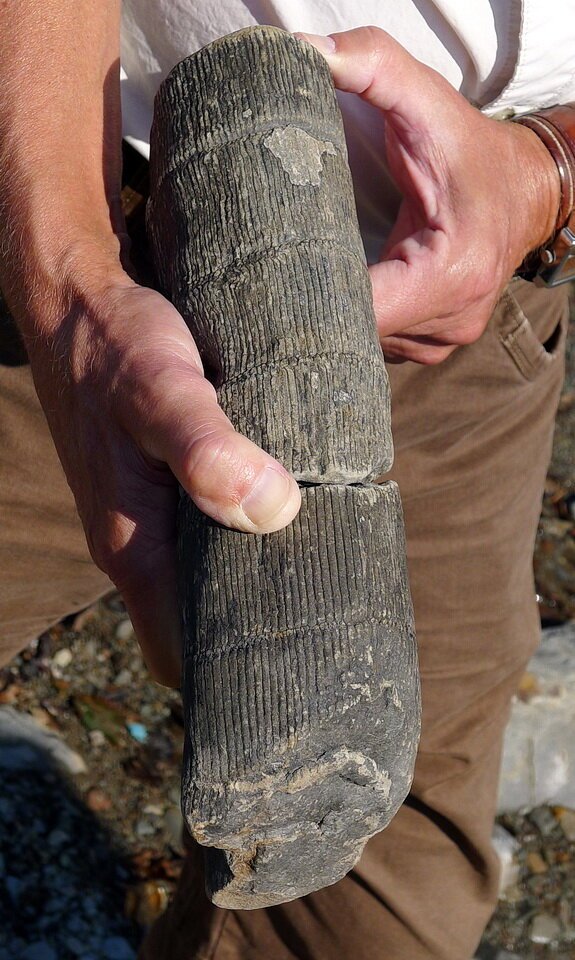Horsetail: Friend or Foe - Earth Day 2021
When I walk through the bush, I look at plants and geology. Sometimes, I see, or think I see, a link between the two. There are two species that get my attention: Field horsetail (Equisetum arvense); and Fan-clubmoss (Diphasiastrum digitatum). The ancestors of both these species have, and are contributing to, climate change. Should we be angry? Yes, but not at the plants.
To a gardener, Equisetum (Photo 1) is not your friend.
Photo 1: Spore structures of field horsetail (Equisetum arvense). Ancestors of Equisetum appear in the geological record about 325 to 300 million years ago and their remains are a component of the massive coal deposits that formed 300 million years ago. Photo composed by Andy Fyon, south of Sudbury Ontario, Canada, April 26, 2008.
Once established, it is hard to remove. But, we should be pleased that its ancient ancestor, called Calamites, is extinct and and not around to infect your garden (Photo 2).
Photo 2: Calamites is an ancient relative of Equisetum (horsetail). About 325 to 300 million years ago, Calamites grew to heights up to 50 meters (165 feet) in ancient, warm, moist coal swamps. The remains of Calamites were an important component of the massive coal deposits that formed 300 million years ago. Photo composed by Andy Fyon, at the Joggins Fossil Cliffs, UNESCO World Heritage Site, Nova Scotia, Canada, Sept 12, 2012.
About 325 to 300 million years ago, Calamites grew to heights up to 50 meters (165 feet) in ancient, warm, moist coal swamps. The remains of Calamites were an important component of the massive coal deposits that formed 300 million years ago.
On the forest floor, modern-day Fan-clubmoss (Diphasiastrum digitatum, formally known as Lycopodium digitatum) looks like a tiny cedar tree (Photo 3). But the ancient clubmoss ancestors, belonging to the family Lycopodiaceae, evolved between 410 million years ago and 380 million years ago. Like Calamites, the ancient clubmosses grew up to 40 m (130 feet) tall. They too thrived in the warm, moist, coal swamps about 360 to 286 million years ago and their remains helped create great coal beds.
Photo 3: Modern-day Fan-clubmoss (Diphasiastrum digitatum, formally known as Lycopodium digitatum) looks like a tiny cedar tree. Its ancient clubmoss ancestors, belonging to the family Lycopodiaceae, evolved between 410 million years ago and 380 million years ago. The clubmoss ancestors grew up to 40 m (130 feet) tall in the warm, moist, coal swamps about 360 to 286 million years ago. Their remains helped create great coal beds. Photo composed by Andy Fyon, at Burwash Prison Farm, south of Sudbury, Ontario, Canada, May 4, 2007.
Earth Day 2021
What is the relevance to Earth Day? Humans have been burning coal since about 1750, beginning with the Industrial Revolution. That added a lot of carbon dioxide to the Earth’s atmosphere. That greenhouse gas is contributing to climate change, which threatens the Earth in ways we, homo sapiens, have never experienced.
Should we be angry? Yes, but not at the ancestors of Equisetum and Diphasiastrum. After all, they were doing their thing: living, propagating, and dying. It is we humans who choose to transform the coal into the greenhouse gas carbon dioxide.
April 22, 2021; Nov 17/21



